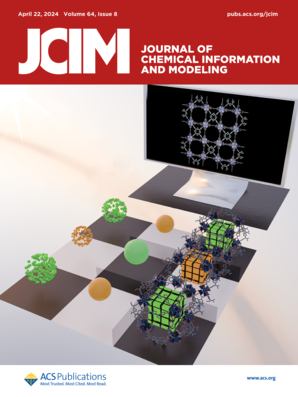结合机器学习和SHAP分析促进具有定制光物理性质的苯并噻唑衍生物的合理设计。
IF 5.6
2区 化学
Q1 CHEMISTRY, MEDICINAL
引用次数: 0
摘要
2,1,3-苯并噻唑(BTD)衍生物在先进的光物理应用中显示出前景,但由于复杂的结构-性质关系,设计具有理想性能的分子仍然具有挑战性。现有的计算方法在精确预测光物理特性时成本较高。采用基于摩根指纹的机器学习预测BTD导数的最大吸收和发射波长。使用了三种不同的机器学习模型,即Random Forest, lightgbm和XGBoost。随机森林的吸收R2值为0.92,发射R2值为0.89,内部采用10倍交叉验证,外部采用最近的实验数据验证。SHapley添加剂解释(SHAP)分析揭示了关键的设计见解,强调叔胺的存在和溶剂极性是红移排放的关键驱动因素。通过基于网络的预测工具的开发,机器学习加速分子设计的潜力得到了证明,为研究人员提供了一种强大的方法来设计具有增强光物理性质的BTD衍生物。本文章由计算机程序翻译,如有差异,请以英文原文为准。
Integrating Machine Learning and SHAP Analysis to Advance the Rational Design of Benzothiadiazole Derivatives with Tailored Photophysical Properties.
2,1,3-Benzothiadiazole (BTD) derivatives show promise in advanced photophysical applications, but designing molecules with optimal desired properties remains challenging due to complex structure-property relationships. Existing computational methods have a high cost when predicting precise photophysical characteristics. Machine learning with Morgan fingerprints was employed to forecast BTD derivative maximum absorption and emission wavelengths. Three flavors of machine learning models were applied, namely, Random Forest, LigthGBM, and XGBoost. Random forest achieved R2 values of 0.92 for absorption and 0.89 for emission, validated internally with 10-fold cross-validations and externally with recent experimental data. SHapley Additive exPlanations (SHAP) analysis revealed critical design insights, highlighting the tertiary amine presence and solvent polarity as key drivers of red-shifted emissions. By the development of a web-based predictive tool, the potential of machine learning to accelerate molecular design is demonstrated, providing researchers a powerful approach to engineer BTD derivatives with enhanced photophysical properties.
求助全文
通过发布文献求助,成功后即可免费获取论文全文。
去求助
来源期刊
CiteScore
9.80
自引率
10.70%
发文量
529
审稿时长
1.4 months
期刊介绍:
The Journal of Chemical Information and Modeling publishes papers reporting new methodology and/or important applications in the fields of chemical informatics and molecular modeling. Specific topics include the representation and computer-based searching of chemical databases, molecular modeling, computer-aided molecular design of new materials, catalysts, or ligands, development of new computational methods or efficient algorithms for chemical software, and biopharmaceutical chemistry including analyses of biological activity and other issues related to drug discovery.
Astute chemists, computer scientists, and information specialists look to this monthly’s insightful research studies, programming innovations, and software reviews to keep current with advances in this integral, multidisciplinary field.
As a subscriber you’ll stay abreast of database search systems, use of graph theory in chemical problems, substructure search systems, pattern recognition and clustering, analysis of chemical and physical data, molecular modeling, graphics and natural language interfaces, bibliometric and citation analysis, and synthesis design and reactions databases.

 求助内容:
求助内容: 应助结果提醒方式:
应助结果提醒方式:


